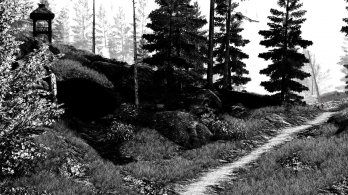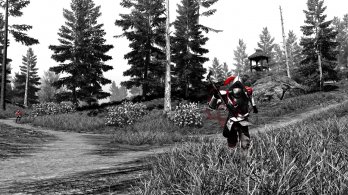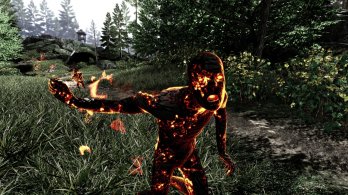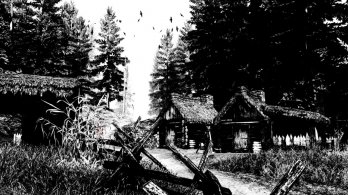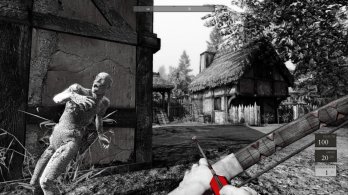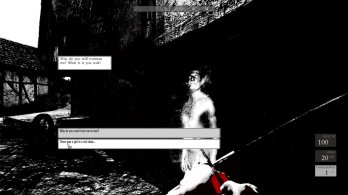 We’ve seen a few indie studios headed by former big time developers pop up in recent years, but relatively few of them are as packed full of talent as Blackpowder Games. Founded by six past members of Monolith Productions, the studio behind F.E.A.R and Gotham City Imposters, Blackpowder’s mission is to produce “first person action experiences that are distinctive, compelling, and memorable regardless of scope or platform”. Their first attempt? A first-person action/adventure title called Betrayer. I got the chance to ask Blackpowder Games co-founder and former Monolith lead designer Craig Hubbard a few questions about the unique title.
We’ve seen a few indie studios headed by former big time developers pop up in recent years, but relatively few of them are as packed full of talent as Blackpowder Games. Founded by six past members of Monolith Productions, the studio behind F.E.A.R and Gotham City Imposters, Blackpowder’s mission is to produce “first person action experiences that are distinctive, compelling, and memorable regardless of scope or platform”. Their first attempt? A first-person action/adventure title called Betrayer. I got the chance to ask Blackpowder Games co-founder and former Monolith lead designer Craig Hubbard a few questions about the unique title.
GT: How would you describe Betrayer to someone who’s never heard of the game?
Craig Hubbard: It’s an eerie, player-driven first person action/adventure set in the New World at the beginning of the 17th century. The focus is on exploring a mysteriously abandoned colony and trying to piece together what’s going on while dealing with various supernatural threats.
GT: Not many games are set in the 17th century. What influenced your decision to set Betrayer in this time period?
CH: It started with the weaponry. Because we’re a small team and couldn’t afford a huge arsenal, we decided to go with weapons that are a little more skill-based, such as bows and throwing axes, or a little unusual, such as muskets, which I’d been wanting to try in a game for ages. So that gave us a very general timeframe.
We also decided very early on to feature an abandoned colony, but had been thinking 18th century until David Longo, our art director, brought up Roanoke. The more I read about those early New World colonies and what was going on in Europe at the time, the more ideal the era started to feel for the game.
GT: Betrayer seems to be a very original title. Did you get any inspiration from existing games?
CH: Well, creativity is recombinant, so inspiration came from all over the place but got mixed and matched enough that the lines probably aren’t always obvious. Demon’s Souls, Stalker, and the original Quake were fairly direct influences, both experientially and tonally, whereas others were oblique, like Shadow of the Colossus, Journey, Year Walk, and Little Inferno. But I’ve referenced tons of games during this process, including Diablo 2, Borderlands, Amnesia, Proteus, Walking Dead, Thief, Rainbow Six 3, Half-Life, FarCry 3—the list goes on and on.
And it’s not just games, of course. Movies, documentaries, music, novels, history, art, photos, museum exhibits. The more you absorb, the more you have to work with.
GT: What sets Betrayer apart from other action/adventure titles we’ve seen in recent years?
CH: Any game that offers a very specific experience inherently tends to feel fairly distinctive, so I hope we’ve achieved that. I definitely don’t think you’ll find a game quite like Betrayer even if it uses a similar setting or features a lot of the same game mechanics just because nobody else would interpret things exactly the same as us.
I also think the default look makes the game tense and engaging in a way that feels novel, which is primarily what drew us to it. There are also some key elements like the Listen ability that subtly change how you explore the world.
GT: Betrayer’s black and white art style is one of its most unique features. How does the art add to the gameplay experience?
CH: As I mentioned, we chose the look primarily because of how it impacts gameplay. It requires you to decipher what you’re seeing instead of instantly processing it and cataloguing it. There’s a sort of innate sense of discovery that you don’t get from more conventional visuals. It also makes you feel a little more anxious.
GT: Betrayer promises gamers the ability to chart their own course. How much do player choices impact the development of the storyline?
CH: The game ended up being mostly about discovering or forming theories about what happened to the colony than about shaping events, but you will get to make a very important choice that determines the ending.
GT: We know the game will offer a variety of weapon types, but how accommodating is Betrayer to different playstyles?
CH: The combat system is based around ranged weapons (bows, crossbows, muskets), melee, and thrown weapons (tomahawks). Each category of ranged weaponry has a different overall role, but there are also numerous weapons within that category with different strengths and weaknesses.
In addition to tailoring your loadout to your playstyle, you can also equip up to three charms that grant you various bonuses that let you further specialize.
GT: What has been the most challenging part of developing the game so far?
CH: Adjusting to being such a small team. I think we had more environment artists on Gotham City Impostors than there are total developers on Betrayer. And Impostors was not a big budget title.
Part of it, of course, is that there are fewer people to do the work, but there are also fewer people contributing feedback and suggestions.
GT: What role does feedback from the Early Access community play in your development decisions?
CH: On one level, it lets us know what’s working and what isn’t, which helps us prioritize where to spend our effort. A lot of times you can get hung up on issues you think are going to be dealbreakers only to discover that no one even notices them. And vice versa. So getting the reactions of new players is really useful in that regard.
Feedback can also illuminate opportunities you might have missed. Sometimes it’s a direct suggestion that dovetails perfectly with where you’re headed. Other times it’s as simple as a mistaken assumption: someone inferring game mechanics that aren’t actually there but probably should be.
GT: Can you tell us about any major changes or additions currently in the works?
CH: Well, the next area and a new enemy type are almost done and we’re hoping to follow them up relatively quickly with more content, so please look for updates in the near future!
Betrayer is currently available on Steam Early Access. You can find out more about Betrayer in our preview of the game here, and on the official website here.
Breanna has been gaming since infancy, if gnawing on an unattended controller counts as playing a game. One of the younger members of the Gaming Trend family, she dabbled in PC games as a kid but wasn't fully consumed by the hobby until the sixth generation of consoles. Now an avid PC and console gamer, she looks forward to the day when she can scape together enough cash to join the next gen club.
In the last week of middle school, a math teacher taught her how to program a calculator; she was pretty much hooked then and there. Currently working towards a degree in Computer Science and Applied Math, Breanna hope to someday make games instead of just writing about them. Other hobbies include playing guitar, binge-watching Netflix, and cooking delicious food.

See below for our list of partners and affiliates:

